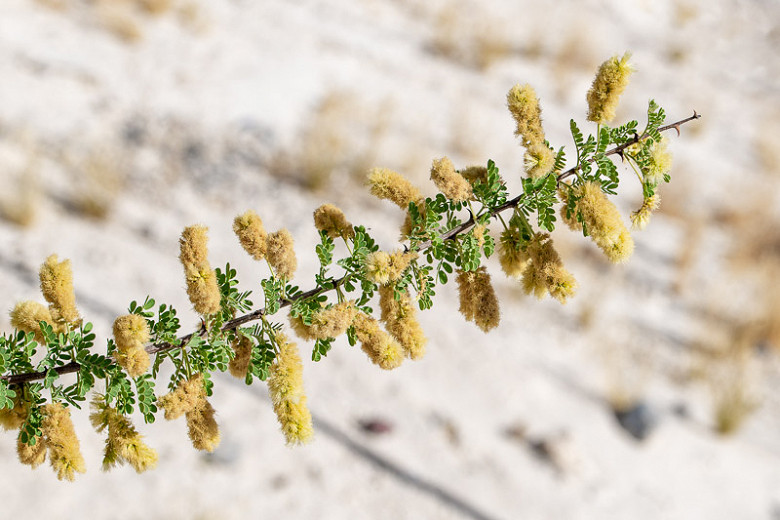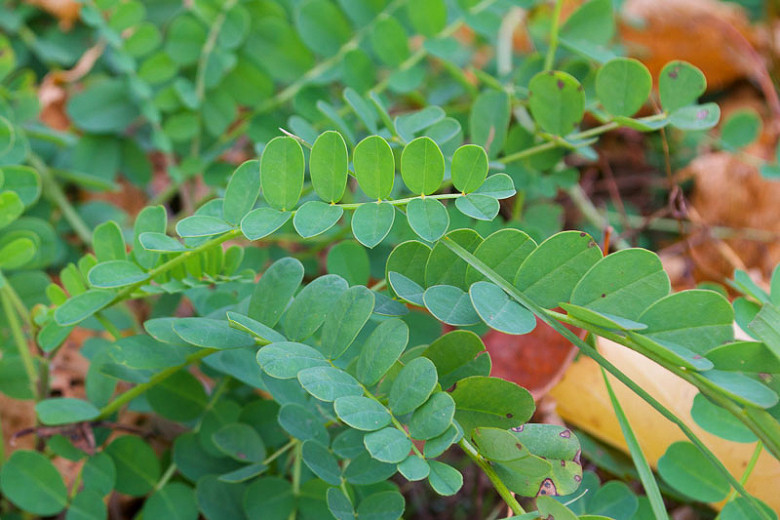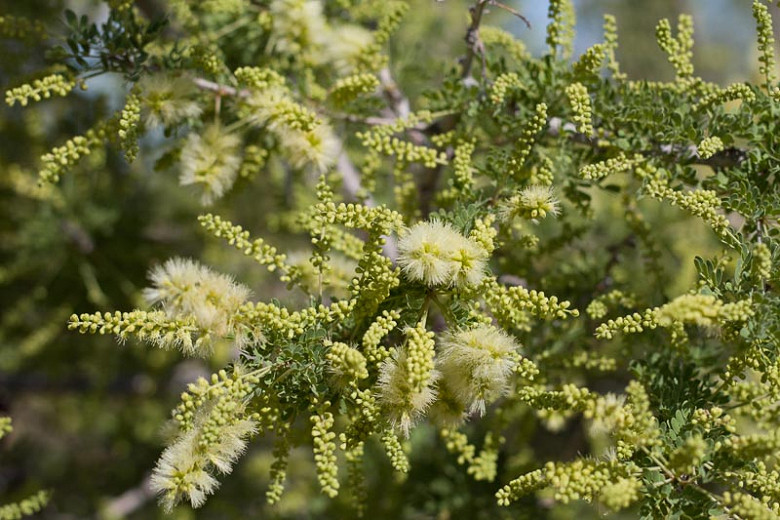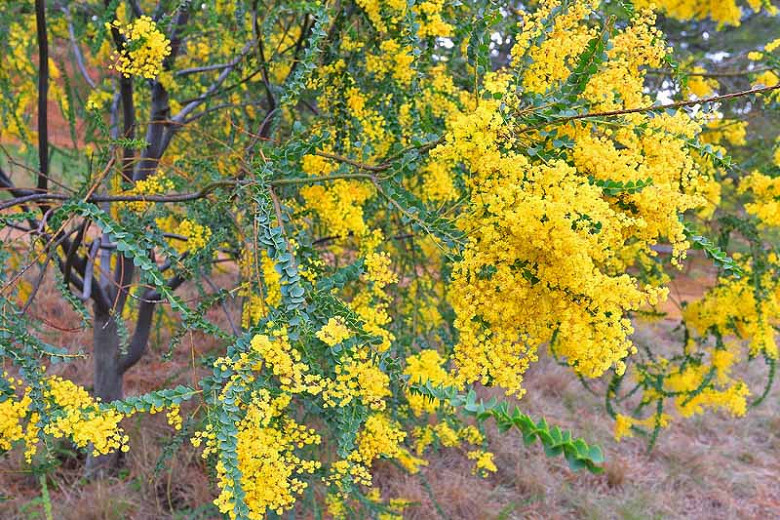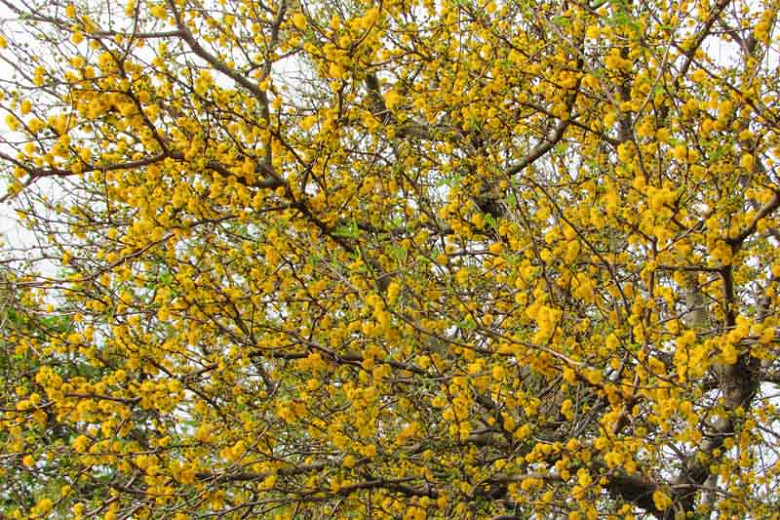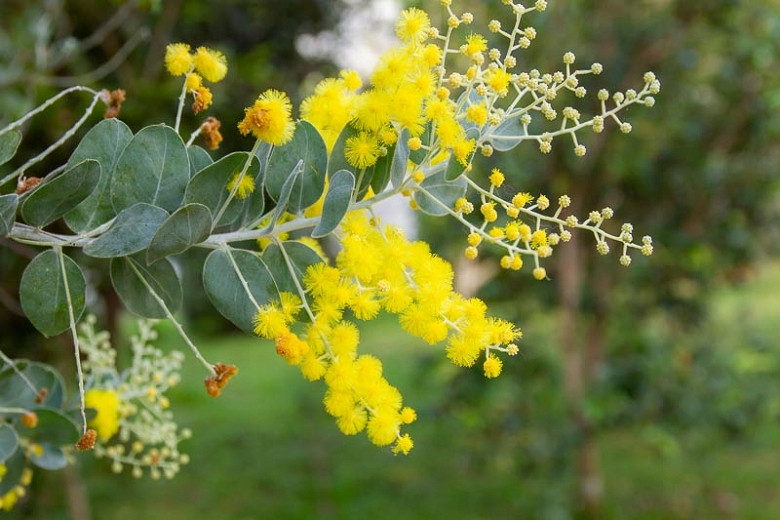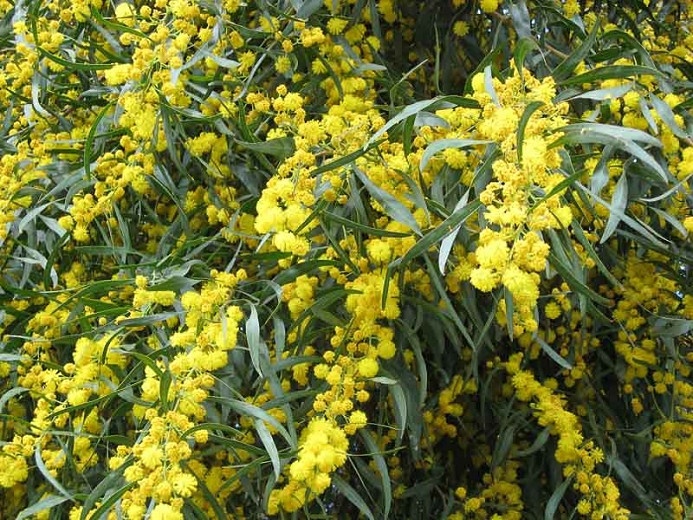Senegalia greggii (Catclaw Acacia)
Senegalia greggii (Catclaw Acacia) is a long-lived, deciduous, spreading shrub or small tree heavily armed with stout, curved spines, like a cat’s claws, along its branches. Blooming from mid-spring to mid-fall, a profusion of scented, fluffy, creamy-white flowers borne in 2 in. clusters (5 cm), create a lovely floral display. They attract bees, butterflies, and other pollinators. Catclaw Acacia is considered an important honey plant. The flowers are followed by straight to twisted pods, 4 in. long (10 cm), constricted between the seeds. They often persist throughout the winter and are valued by birds and wildlife. The foliage is finely divided with twice-pinnately compound, green to gray-green leaves, 1-2 in. long (2-5 cm). Highly adapted to harsh desert conditions, Catclaw Acacia can be used as a large screen, background, desert accent, barrier, or a small multiple-trunk desert tree if trained and irrigated. Also, a great shrub to provide shelter, protection, and shade to a diversity of desert mammals and birds. Beware of the sharp, claw-like thorns – Keep this plant away from traffic.
- Grows up to 10-15 ft. tall (300-450 cm) and 15-20 ft. wide (450-600 cm). Ultimate size and vigor will depend on the amount of supplemental irrigation that it receives.
- Performs best in full sun in rocky, sandy, well-drained soils. Requires little to no irrigation once established. Use supplemental water to encourage fast increases in growth and ultimate plant size. Drought tolerant.
- No serious pest or disease issues.
- Prune only to train as a multiple trunk small tree.
- Propagate from seed. Transplanting is difficult because of the deep root system.
- Twigs and foliage are poisonous to animals if eaten.
- Native to the southwestern United States and northern Mexico, from the extreme south of Utah south through southern Nevada, southeast California, Arizona, New Mexico, and western Texas to Baja California, Sinaloa, and Nuevo Leon in Mexico.
Requirements
| Hardiness | 9 – 10 |
|---|---|
| Climate Zones | 10, 11, 12, 13, 14, 15, 16, 17, 18, 19, 20, 21, 22, 23, 24 |
| Plant Type | Shrubs, Trees |
| Plant Family | Acacia |
| Exposure | Full Sun |
| Season of Interest | Spring (Mid,Late)Summer (Early,Mid,Late)Fall |
| Height | 10' – 15' (3m – 4.5m) |
| Spread | 15' – 20' (4.5m – 6m) |
| Water Needs | Low |
| Maintenance | Low |
| Soil Type | Loam, Sand |
| Soil pH | Acid, Alkaline, Neutral |
| Soil Drainage | Well-Drained |
| Characteristics | Fragrant, Showy |
| Native Plants | United States, California, Rocky Mountains, Utah, Southwest, Nevada, Arizona, New Mexico, Texas |
| Attracts | Bees, Birds, Butterflies |
| Garden Uses | Banks and Slopes, Hedges and Screens |
| Garden Styles | Mediterranean Garden |
